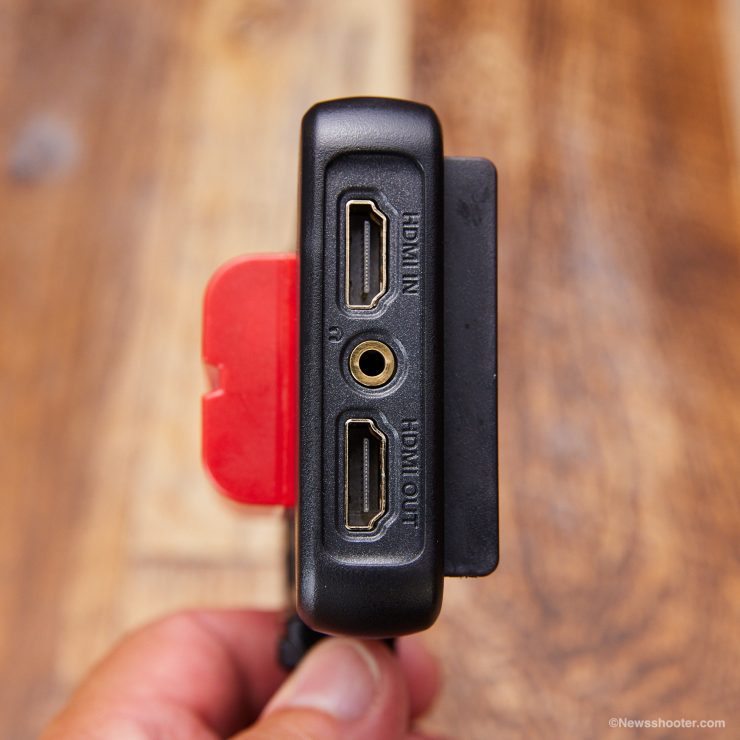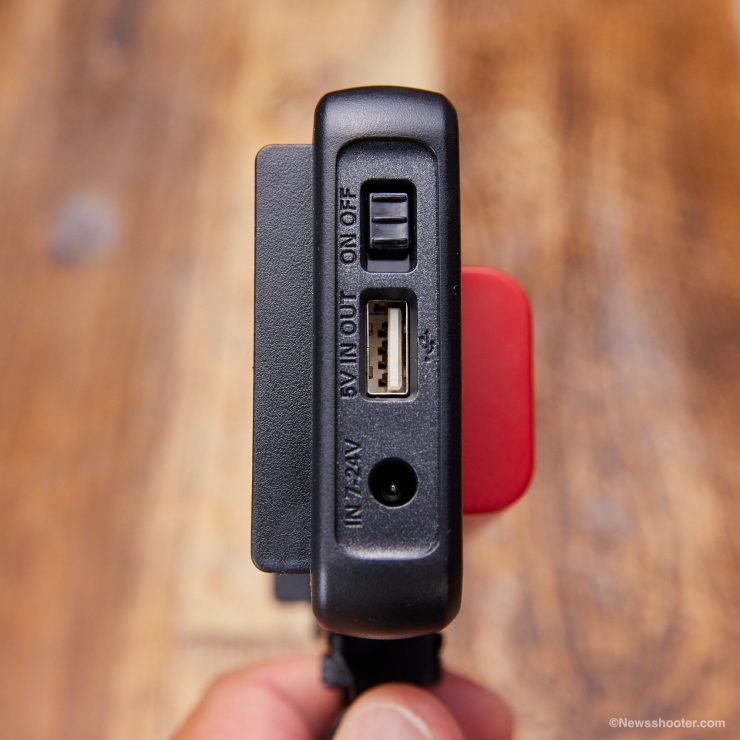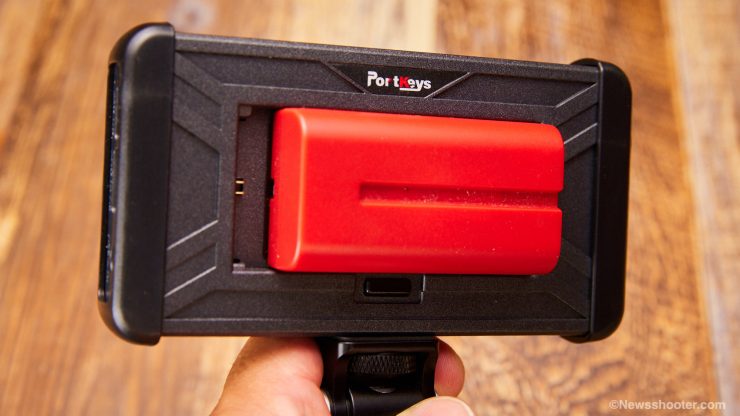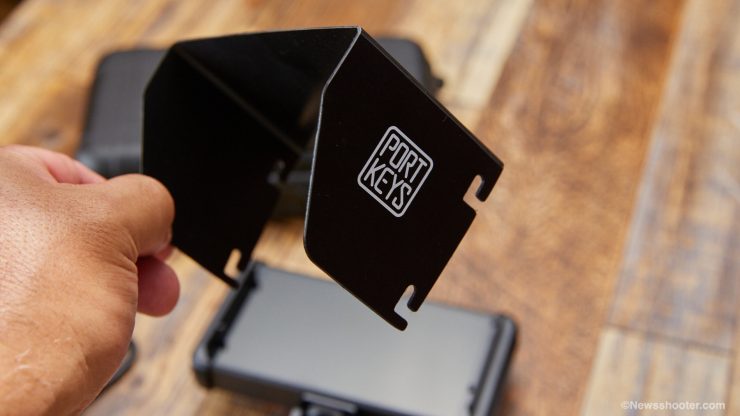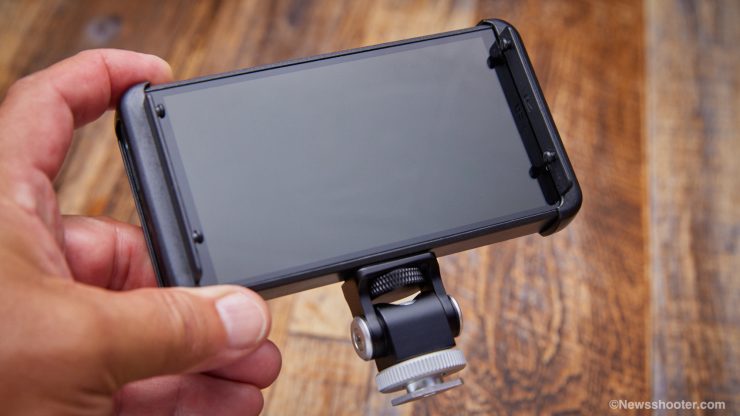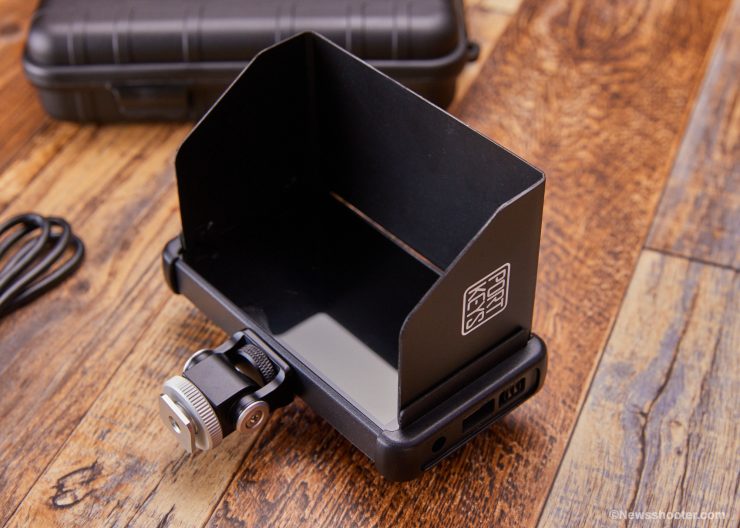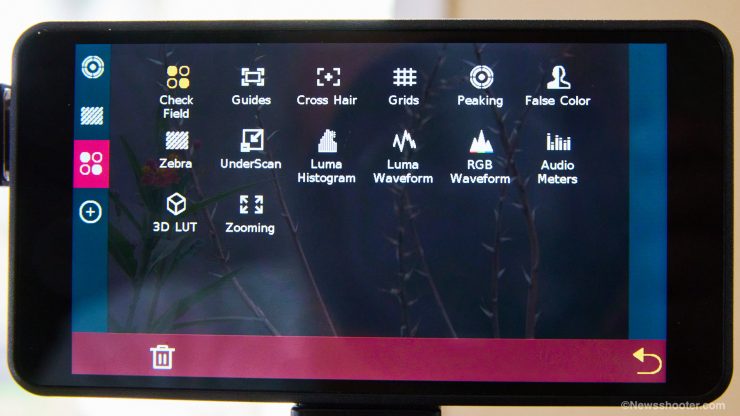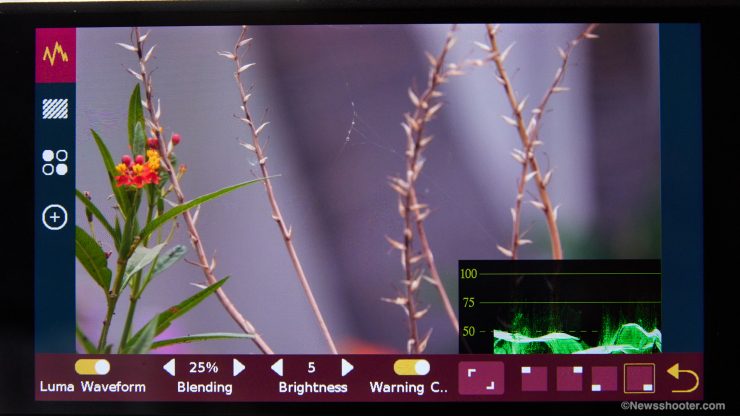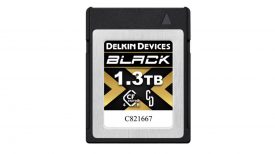
Affordable HD monitors are plentiful these days, and that is a good thing for the frugal filmmaker, but going cheap doesn’t have to mean you get a monitor that doesn’t have decent color and tools. The Portkeys PT5 ticks a lot of boxes in the very inexpensive market. At $169, you get a monitor with good tools and color accuracy. Let’s take a look at all you get in this super budget 5″ monitor.
What’s Included With The PT5
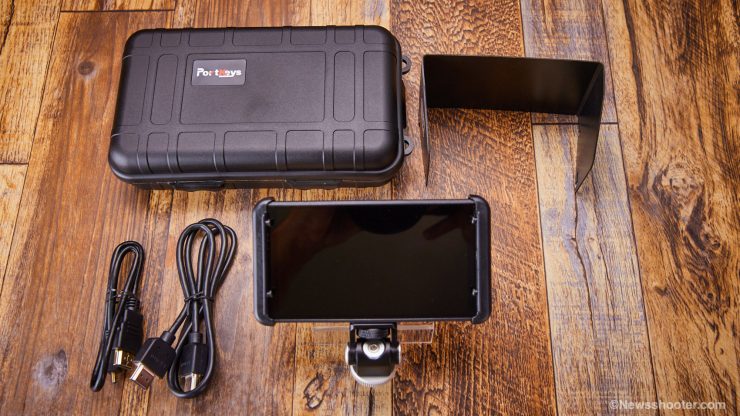
- Full-size HDMI cable
- Micro to full-size HDMI cable
- Cold Shoe Monitor Mount
- Hex Wrench
- Sunshade with removable side mounts
- Travel Case
- User Manual
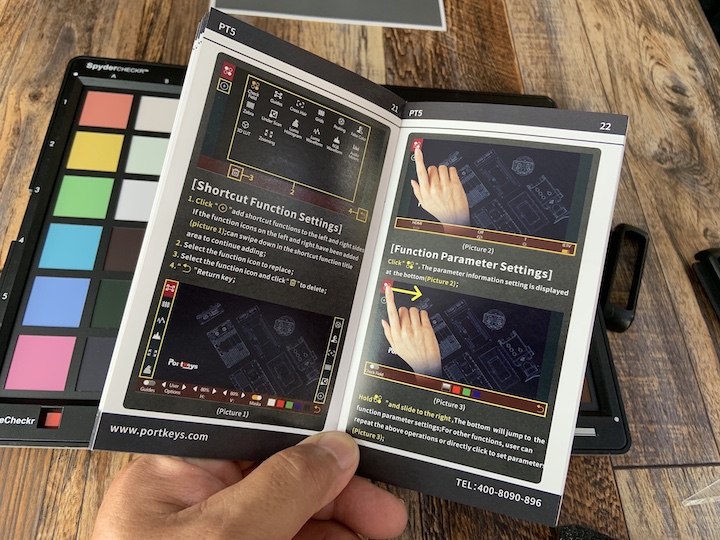
I must say it’s fantastic that Portkeys includes an actual User Manual that is easy to read and follow. It’s a nice size too, with color images on how to use the monitor’s settings. So many products have very poor documentation if any at all. Portkeys deserve a tip of the hat for making a proper manual, so you get up and running quickly. Not all settings are intuitive, especially when you have to enter a menu with a touchscreen.
Build Quality
The PT5 frame is made of ABS plastic. It’s lightweight and thin. I can see it being popular for gimbals and smaller cameras. At 5″, it does seem small compared to some LCD screens on cinema cameras, but if you need compact and lightweight, the PT5 delivers on both.
10 bit (8+2 FRC) Screen
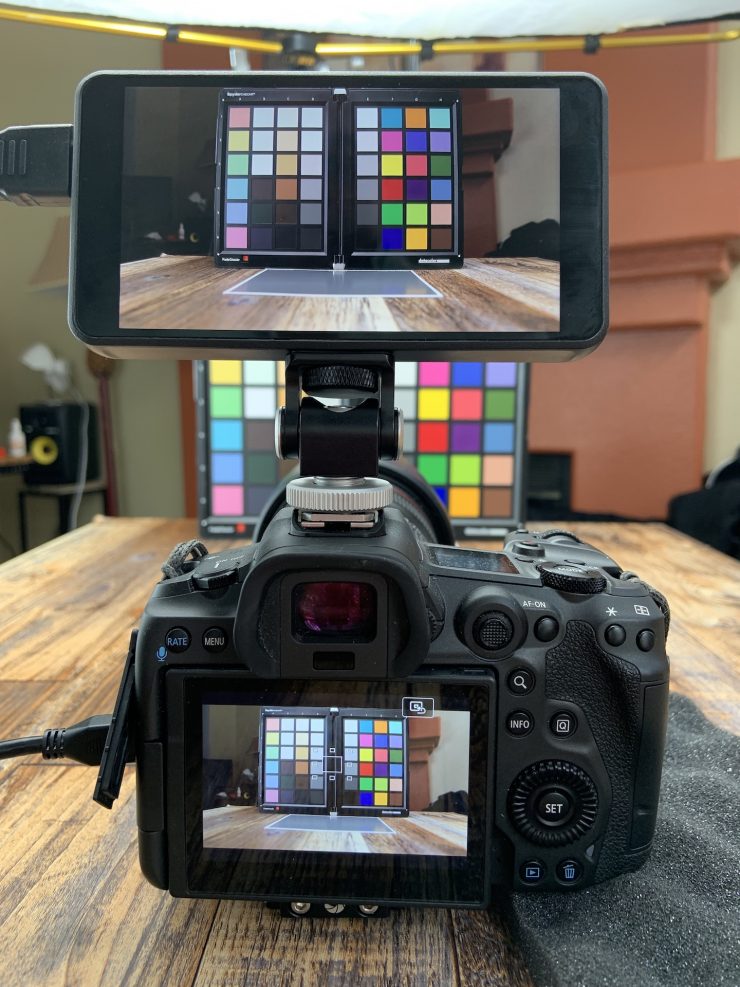
Portkeys states the PT5 is 10 bit 8+2 FRC which is a popular way to get 10-bit color representation, but not technically true 10-bit. It is confusing for sure.
A true 10-bit monitor displays 1.07 billion colors while an 8-bit monitor has 16.7 million colors.
An 8-bit + FRC monitor use adjacent colors to the original color and then flashes these two colors back to back to fool our eyes into seeing the original missing color. Tricky right? Since those colors and pixels are so tiny, this works well and keeps the cost of the panel way down as true 10-bit panels are costly to manufacture; therefore, they are also expensive to buy.
The monitor can handle 4K resolution but it’s an HD 1920 x 1080 monitor. It does a good job scaling the image.
500 Nits
The screen only being 500 nits is the one spec that is a little disappointing. It’s not a monitor that performs well outside in bright conditions. Indoors it looks really nice. Not to say you can’t use it outside but it will need to be shaded beyond the included sunshade. In the shade, it works okay similar to the stock C200 LCD. Compared to the C200 the PT5 doesn’t work as well as the Canon LM-V1 4″ LCD Monitor in the sun. The PT5 is definitely a superior monitor when image quality is compared.
To brighten the screen using the backlight setting is better than just upping the brightness.
Image Quality
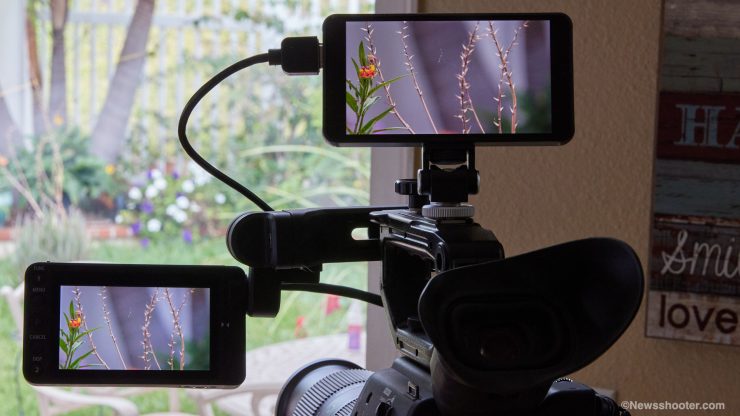
The image is good. It has a nice sharp picture with a very good color rendition. Out of the box, it looks great. Very surprising for a monitor in this price range. I tried it with the Canon C200 and R5, and with both cameras, the monitor looked very close to the LCD. The PT5 is much sharper with better detail than the stock C200 LCD by a large margin. I was surprised by that.
Touchscreen
Touchscreens have their advantages and disadvantages. One big disadvantage is fingerprints on the screen from constantly touching it. The greasy prints will give an RGB smear to the image. Keep a lens cloth in your pocket if you use the touchscreen a lot.
Viewing Angle
The viewing angle is good for the operator. If you are on the side or about 20 degrees, it starts to dim a bit. The screen is glossy, so reflections can be an issue.
Supported Resolutions and frame rates
- 4096×2160p@24Hz
- 3840×[email protected],24Hz,25Hz,29.97Hz,30Hz
- 1920×[email protected],24Hz,25Hz,29.97Hz,30Hz,50Hz,59.94Hz,60Hz
- 1920×[email protected],24Hz,25Hz,29.97Hz,30Hz
- 1920×1080i@50Hz,59.94Hz,60Hz
- 1280×720p@50Hz,59.94Hz,60Hz
- 720×576p&720×576i@50Hz
- 720×480p&720×480i@50Hz,59.94Hz,60Hz
Supported Output Resolutions and Frame Rates
- 4096×2160p@24Hz
- 3840×[email protected],24Hz,25Hz,29.97Hz,30Hz
- 1920×[email protected],24Hz,25Hz,29.97Hz,30Hz,50Hz,59.94Hz,60Hz
- 1920×[email protected],24Hz,25Hz,29.97Hz,30Hz
- 1920×1080i@50Hz,59.94Hz,60Hz
- 1280×720p@50Hz,59.94Hz,60Hz
- 720×576p&720×576i@50Hz
- 720×480p&720×480i@50Hz,59.94Hz,60Hz
Inputs and Powering Options
The PT5 is an HDMI monitor with an HDMI out option. In between the IO is a 3.5mm headphone jack. On the other side is an ON/OFF switch that I actually like a lot. Those long press buttons are a little annoying, like the ones on the Atomos monitors. I like the speed of a switch.
The PT5 can be powered with two different types of batteries. The Sony NP and Canon LP-E6 types. The DC input is 7.4 ~ 24V. The PT5 has a lot of powering options.
The USB port can be used for loading LUTS and firmware updates. You can also use the USB port for powering the monitor with an external battery or use the output option to power a device that supports 5V 2 amps.
Keeping it Cool
There is no fan in the thin monitor and it does get warm to the touch but nothing to be concerned about. It only draws 6 watts and lasts a long time with a small NP-F550.
Sunshade
The sun hood is very lightweight and made of flexible plastic. It clips into the mounts on the PT5 and holds securely. I was a little surprised since the design is simple.
The side mounts are removable and don’t block the view. When I state it works well I’m referring to the simple mounting system. At only 3″ it doesn’t shade the monitor in the sun very well if the sun is behind you. Putting your hand over the top works better in most cases. I still appreciate having one in situations where the small design works best.
Included Cold Shoe Mount
The monitor has only one mounting point on the bottom. It is a 1/4″ 20 with slots on each side for mounts that have the Arri Accessory pins. The only issue is the Arri Accessory mount is 3/8″, not 1/4″ 20, so if you want to take advantage of the no twist feature, you will have to find a 1/4 20 version. It would have been nice if the PT5 had a 3/8″ 16 tap and used a 1/4″ 20 insert so you could get the best of both worlds.
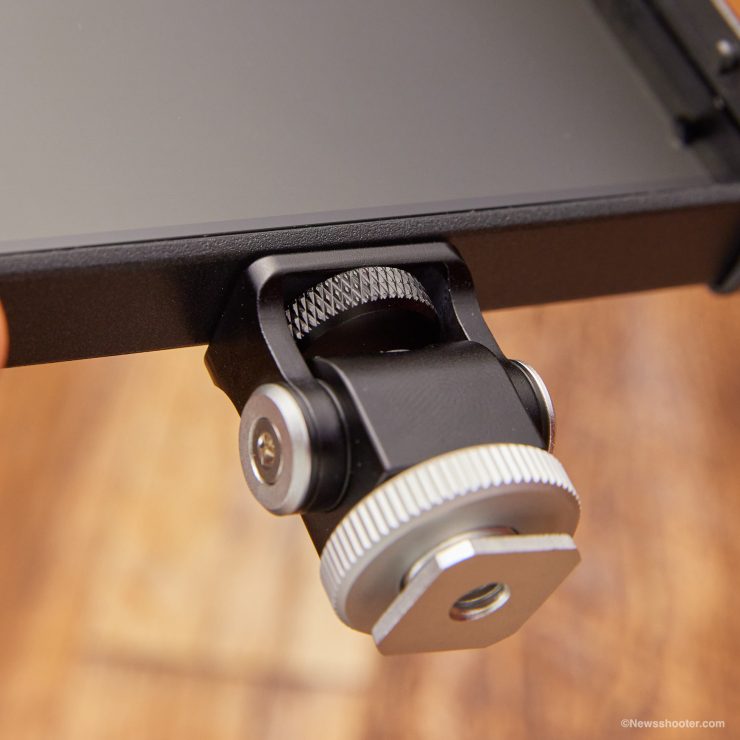
The included cold shoe mount is a popular design you see these days. It uses friction to keep it in place when tilted or panned. The fact that it does both is great. Mine was a little loose out of the box, so I tightened it up with the included hex wrench.
Portkeys PT5 Parameters
| Screen Size | 5″ |
| Dimension | 136 x 72 x 17mm |
| Brightness | 500 nit |
| Resolution | 1920 x 1080 |
| Contrast Ratio | 1000:1 |
| Weight | 130g |
| Color Depth | 10bit(8+2 FRC) |
| Material | ABS engineering plastics |
| Input Voltage | 7.4~24V |
| Output Voltage | 5V2A |
| Video Signal Input | HDMI 4K30P |
| Video Signal Output | HDMI 4K30P |
| USB-A | Upgrade Firmware/Load LUT |
On-Board Tools
Tools are an important feature for monitors, and the PT5 has several. The menu to access them is done with the touchscreen. The touchscreen is responsive with a tap anywhere on the screen.
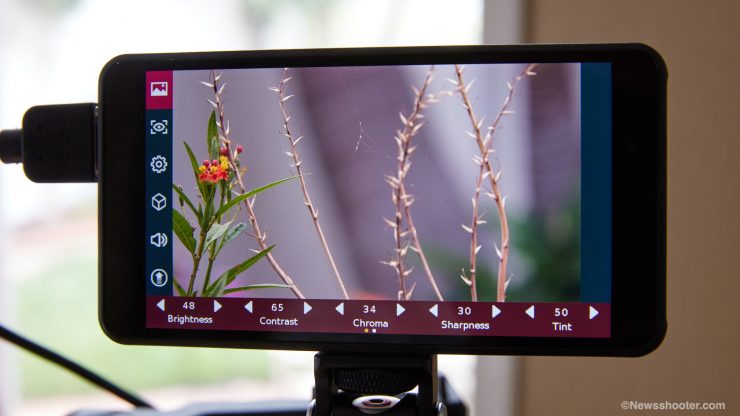
The image is adjusted by tapping once on the screen and setting the first icon on the top right that looks like a mountain with the sun. On the bottom are settings for Brightness, Contrast, Chroma, Sharpness, and Tint. Swipe to the left inside the burgundy-colored area reveals the second page of settings. Here you have the Anamorphic Desqeeze options, Backlight and Color Temperature. The PT5 was set to 6500K out of the box, and the color looks good to me.
Since the monitor is only 500 nits, it’s best to use the Backlight option to brighten the monitor. This prevents the image from getting washed out, as using the brightness setting will do that if set too high.
- 3D LUT Import from USB and save internally.
- Anamorphic Desqeeze – 1X, 1.33X, 1.42X, 1.5X, 1.66X, 1.85X, 2X, 2.35X, USER DEFINED
- Multiple Peaking Options – Orig, B&W, Greyscale Low/Middle/High, Black,
- Menu Transparency Adjustment
- Color Temperature – 5600K, 6500K, 7500K, 9300K, Manual Setting with RGB contols
- Zebra
- Contrast
- OSD Flip
- Histogram
- RGB & Luma Waveform
- Backlight
- Zooming
- Cross Hair
- Grids – 4 to 10 bock regions
- False Color
- Custom RGB
- Sharpness
- Chroma
- Brightness
- Tint
- Battery Voltage Checking
- Guides – 80%, 90%, 1:1, 16:9, 9:16, 15:9, 4:3, 1:5:1, 1:85:1, 2:1, 2:35:1, 2:39:1, User definable
- Check Field
- Audio Meters
- Image Flip
Presets
Once inside the tools selection menu, you can pick a tool and save it for quick selection. You can save up to 12 presets.
Each tool has its own settings. To open the settings, you tap on the icon and drag to the right, and the options appear at the bottom of the screen.
Waveforms
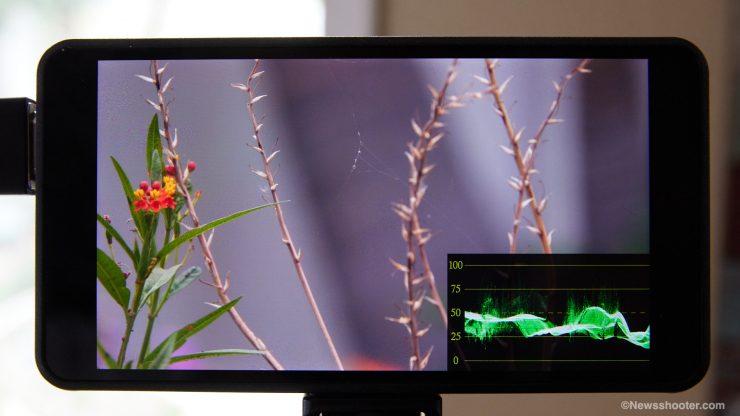
Smaller View 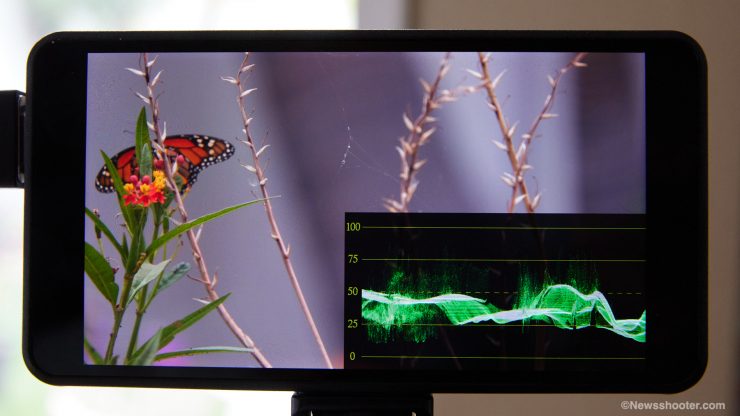
Larger View 
RGB Waveform with clipping warning on
With the scopes, you can change the location to any of the four corners with two size options. You can’t go full screen.
I found a bug when using Zebra, Luma, and RGB Waveform. When they are on, the overall image gets darker. I’m sure a firmware update could fix the issue. This doesn’t occur with the other scopes.
I like the scopes overly as it has the IRE scale from 0-100 and is easy to read. So many scopes are pluggy and practically worthless. The PT5 is a good one outside of the screen dimming issue.
Zebra
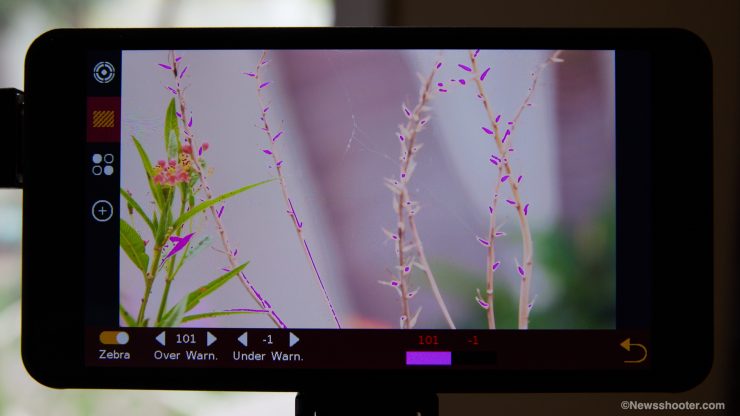
The Zebra function is odd as it kind of acts like False Color with a blob of purple where you set the overexposure for. It needs some work as this isn’t how Zebra Strips traditionally works.
False Color
I like False Color however the PT5 doesn’t have the scale on the screen for the IRE values when the tool is active. Without the scale, you have to assume what the colors represent. I figure black to blue is 0 IRE and Yellow is over 100 IRE.
LUTS
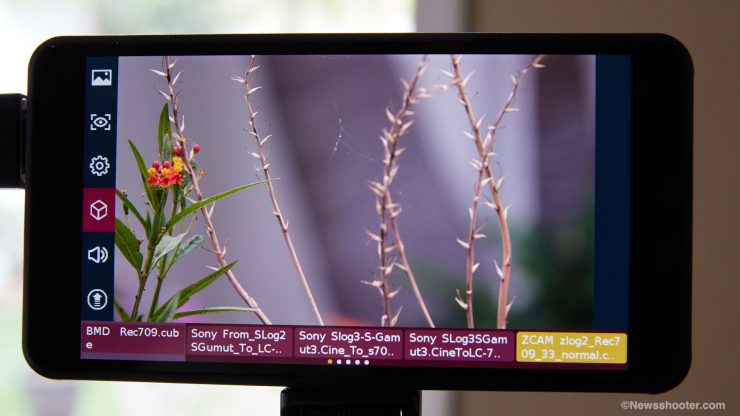
Shooting in Log is popular and can be difficult if the image is super flat. The PT5 has a few preloaded 3D LUTS, and you can import up to twenty of your own from a USB drive directly into the monitor and save them. That’s a lot of LUTS!
Competition
In the budget space, Feelword and Liliput have several options. Like a lot. I think the Atomos Shinobi at $299 is one monitor to consider as well. Yes, it cost $130 more, but you get something for it namely a 1000 nits screen that is also .2″ larger. Affordable monitors are plentiful now so doing some research and getting one that fits your needs is important. The good news is you don’t have to spend a lot of money to get a usable monitor.
Conclusions
The Portkeys PT5 is a very good monitor at an affordable price of only $169. It has the onboard tools you need to assist in focus and exposure plus it includes a cold shoe mount and sunshade. The only thing I wish it had was a brighter screen as 500 nits aren’t going to cut it outside in the sun. For indoors or in a shaded area, it works fine. Out of the box, the color settings and the image are excellent plus you can dial it in with RGB adjustments if you find it not to your liking. The monitor is also nice and sharp, making focusing a breeze. This isn’t a cheap fuzzy monitor.
The latency is very low making shooting dialogue not distracting and driving you crazy. Of course, this depends greatly on the camera you are using.
It’s very surprising to get so many features included at such a low price. It is an excellent option for the first-time monitor buyer as you get everything you need except the batteries to operate it out of the box. Menu systems have been an issue with a lot of monitors. Portkeys has found a good one with the latest releases and for the most part, has been consistent in using the same one. Even my BM5 got the new menu system with a firmware update.
Like what we do and want to support Newsshooter? Consider becoming a Patreon supporter and help us to continue being the best source of news and reviews for professional tools for the independent filmmaker.

